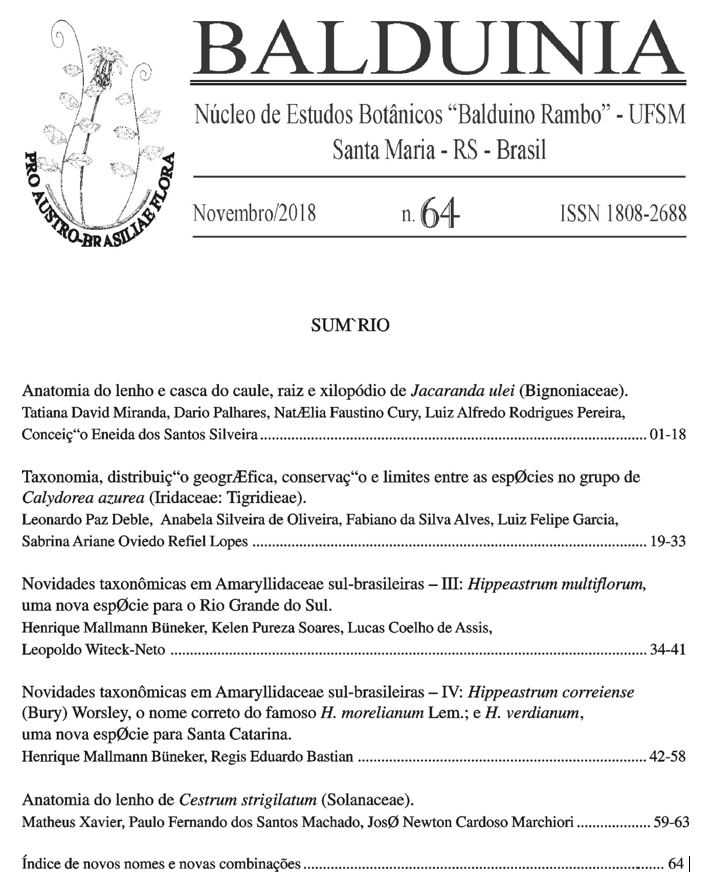Comparative wood and bark anatomy of stem, root and xylopodium of Jacaranda ulei (Bignoniaceae)
DOI:
https://doi.org/10.5902/2358198032114Palavras-chave:
Cerrado, savannah, drought, fire, resilienceResumo
Jacaranda ulei is a common shrub from Cerrado that presents medicinal properties. Aerial stem is not resistant to the naturally recurrent fire of this ecosystem. The plants re-sprout via the xylopodium. This paper compares the anatomical structures of the wood and the bark of the root, the stem, and the xylopodium. A sample of five individuals of Jacaranda ulei was processed using usual techniques. In common, the wood is diffuse porous and the axial parenchyma is confluent and vasicentric, but there are clear differences among the root, the stem and the xylopodium. The bark is thin, with gradual transition seen between the conducting and the nonconducting phloem, and with groups of fibers and sclereids. In the stem, the fibers are arranged in bundles and the periderm presents hairs. In the subterranean organs, the sclerenchymatic tissue is arranged in concentric lines and secretory canals were seen. Such differences are probably related to the different functions of aerial and subterranean organs.
Downloads
Downloads
Publicado
Como Citar
Edição
Seção
Licença
Autores que publicam nesta revista concordam com os seguintes termos:
- Autores mantém os direitos autorais e concedem à revista o direito de primeira publicação, com o trabalho simultaneamente licenciado sob a Licença Creative Commons Attribution (CC-BY-NC-SA) que permite o compartilhamento do trabalho com reconhecimento da autoria e publicação inicial nesta revista, não comercial e compartilha igual.
- Autores têm autorização para assumir contratos adicionais separadamente, para distribuição não-exclusiva da versão do trabalho publicada nesta revista (ex.: publicar em repositório institucional ou como capítulo de livro), com reconhecimento de autoria e publicação inicial nesta revista.
- Autores têm permissão e são estimulados a publicar e distribuir seu trabalho online (ex.: em repositórios institucionais ou na sua página pessoal) a qualquer ponto antes ou durante o processo editorial, já que isso pode gerar alterações produtivas, bem como aumentar o impacto e a citação do trabalho publicado (Veja O Efeito do Acesso Livre).







